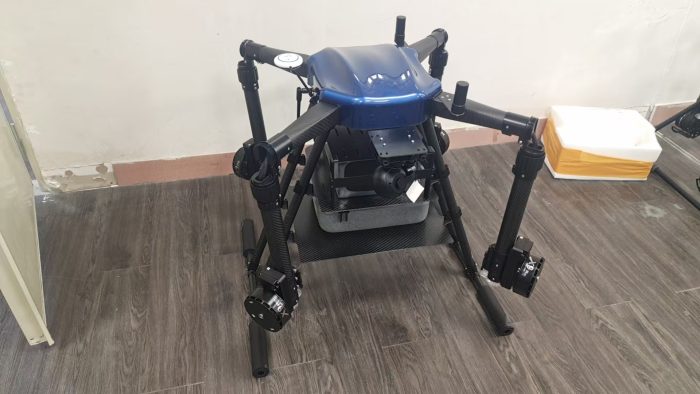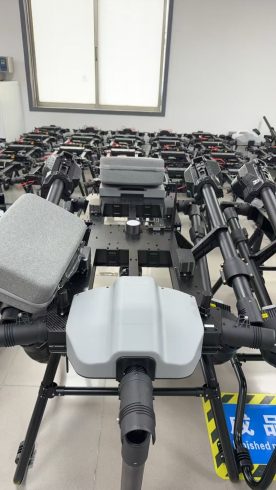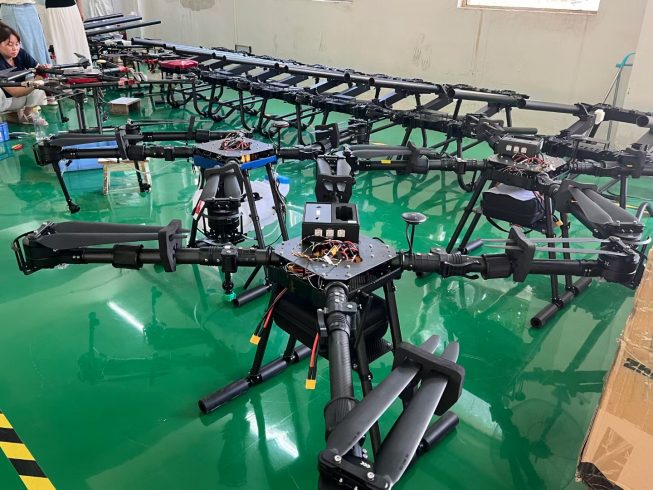For centuries, farming has been a dance between intuition and labor—generations of growers reading soil texture, cloud patterns, and crop health by hand. But today, a quiet revolution is unfolding in fields from Iowa to Indonesia, led by unsung heroes: agricultural drones. Behind these flying tools of precision lies a factory engineered not just to build hardware, but to honor the wisdom of traditional farming while propelling it into a tech-driven future. Here’s how we’re redefining what it means to “work the land.”
The Farmer’s Dilemma: Preserving Heritage, Embracing Change
Meet Luis, a 58-year-old coffee grower in Colombia. His family has tilled the same volcanic hills for three generations, relying on ancestral knowledge: pruning by moon cycles, spotting blight by leaf discoloration, and fertilizing with compost he makes himself. Yet, climate change has thrown new curveballs—unpredictable rainfall, erratic temperatures, and pests migrating to higher altitudes. “My father’s methods worked for him,” Luis admits, “but my son says we’re ‘farming in the dark’ now.”
Luis isn’t alone. Smallholder farmers—who produce 35% of the world’s food—face a paradox: they safeguard biodiversity and cultural heritage, yet lack access to tools that could boost resilience. Commercial drones, once priced for agribusiness giants, felt out of reach. Manual scouting is time-consuming; chemical overuse risks degrading their fragile land. They need technology that respects their roots while securing their future.
Designing for the Farmer, Not Just the Lab
Our factory was born from this tension. We didn’t start with “What cool tech can we build?” but “What does a farmer need?” Here’s what guided us:
1. Affordability Without Compromise
Traditional drones for agriculture often cost 20,000 or more—prohibitive for small plots. We redesigned from the ground up: lightweight aluminum frames, open-source software, and modular components that cut production costs by 40%. Today, our base model sells for under 5,000, with flexible financing options. For Luis, this meant he could lease a drone for planting season, then share it with neighbors—a game-changer for rural communities.
2. Tech That Speaks “Farmer”
We rejected flashy interfaces in favor of simplicity. Our drones pair with a solar-powered tablet app featuring icons and voice prompts in local languages (Spanish, Swahili, Hindi, and more). Instead of “multispectral analysis,” farmers see “Healthy/Caution/Warning” overlays on field maps. Luis, who struggles with smartphones, now uses voice commands to launch missions: “Scan the north slope for blight.” The app translates his request into flight paths, delivering results in minutes—not days.
3. Sustainability Woven In
Farmers like Luis don’t just grow crops—they steward ecosystems. Our drones prioritize eco-efficiency: battery-powered models cut diesel use by 80%, and precision spraying reduces pesticide runoff by 60% compared to manual methods. We even designed replaceable parts to extend lifespans, reducing e-waste. For Luis, this aligns with his values: “I want to feed my family and leave the land better than I found it.”
From Factory to Field: Building Trust, One Flight at a Time
Innovation fails if it doesn’t earn trust. Our team spends months in target regions before launching products—working side by side with farmers, learning their rhythms, and tweaking designs based on real-world feedback. In Kenya, we discovered drones overheated during midday missions; now, they include sunshades and thermal sensors to auto-pause in extreme heat. In Vietnam, farmers wanted drones to plant rice seedlings; we added a pneumatic seeder attachment, turning them into multi-taskers.
These iterations matter. When Luis first tried our drone, he was skeptical. “I thought, ‘A machine can’t know my coffee trees like I do,’” he said. But after the drone identified a hidden pest outbreak in his west field—something he’d missed for weeks—he became an advocate. “Now I tell my neighbors: ‘This isn’t replacing us. It’s giving us superpowers.’”
The Ripple Effect: Healthier Farms, Stronger Communities
The impact extends beyond individual farmers. In Guatemala, a co-op of 50 smallholders using our drones cut fertilizer costs by 30% and increased bean yields by 22%—extra income they’ve invested in school supplies for their kids. In Nepal, women farmers, historically excluded from fieldwork, now operate drones to monitor cardamom crops, gaining financial independence and respect.
Environmentally, the wins are tangible. Collectively, our drones have reduced pesticide use by over 1.2 million liters globally since 2020—equivalent to filling 500 Olympic swimming pools. Farmers like Luis no longer worry about chemicals leaching into their water sources; they’re growing coffee and protecting the streams their grandchildren swim in.
Growing Together: The Future of Farm-Tech
We’re not done. Our R&D lab is testing drones with AI that learns a farm’s “personality” over time—predicting harvests, suggesting crop rotations, and even alerting farmers to market price shifts. We’re partnering with local repair shops to create “drone clinics” in rural areas, ensuring tech stays accessible long-term. And we’re advocating for policies that subsidize drone adoption for smallholders, because we believe innovation should lift everyone, not just the privileged.
Farming is about legacy. So is our work. By bridging the gap between generations—honoring the wisdom of those who came before while equipping the next with tools to thrive—we’re not just building drones. We’re nurturing a future where tradition and technology grow hand in hand, feeding the world and sustaining the planet.
After all, the best innovation doesn’t erase the past—it honors it.
THE END










暂无评论内容